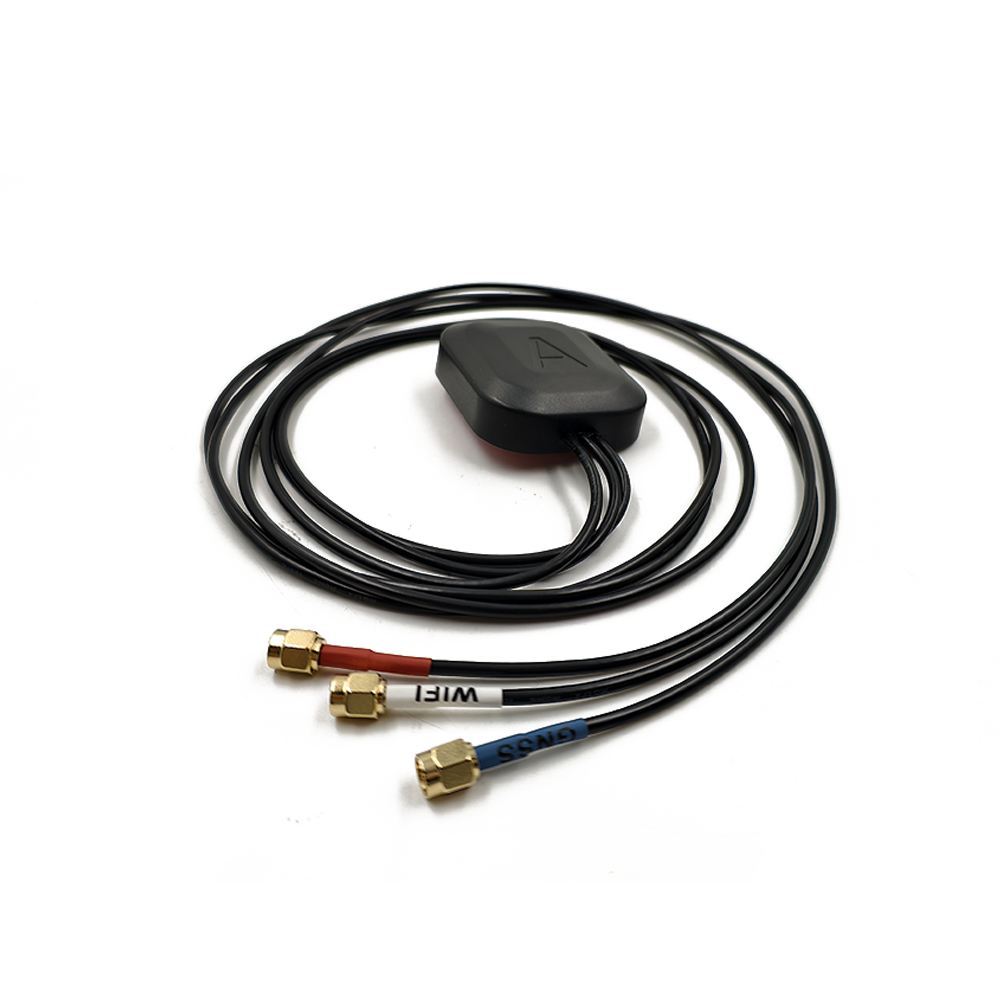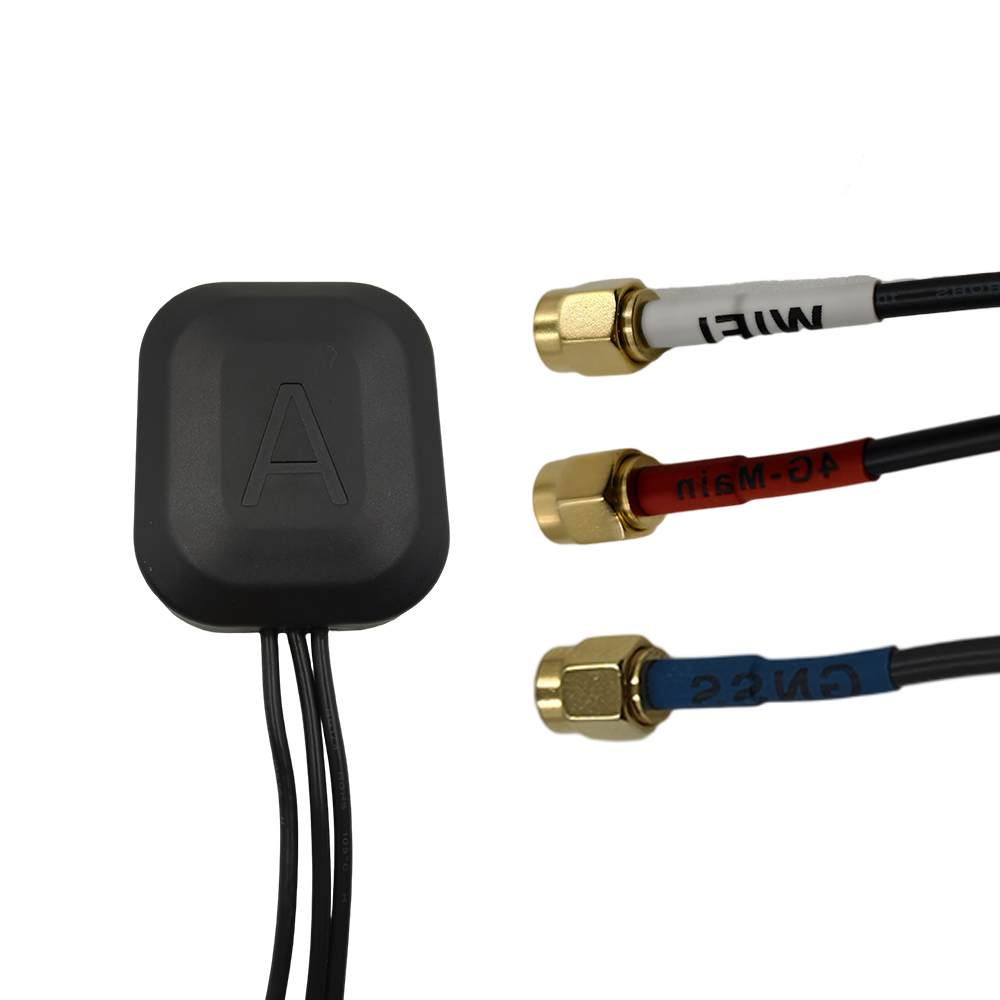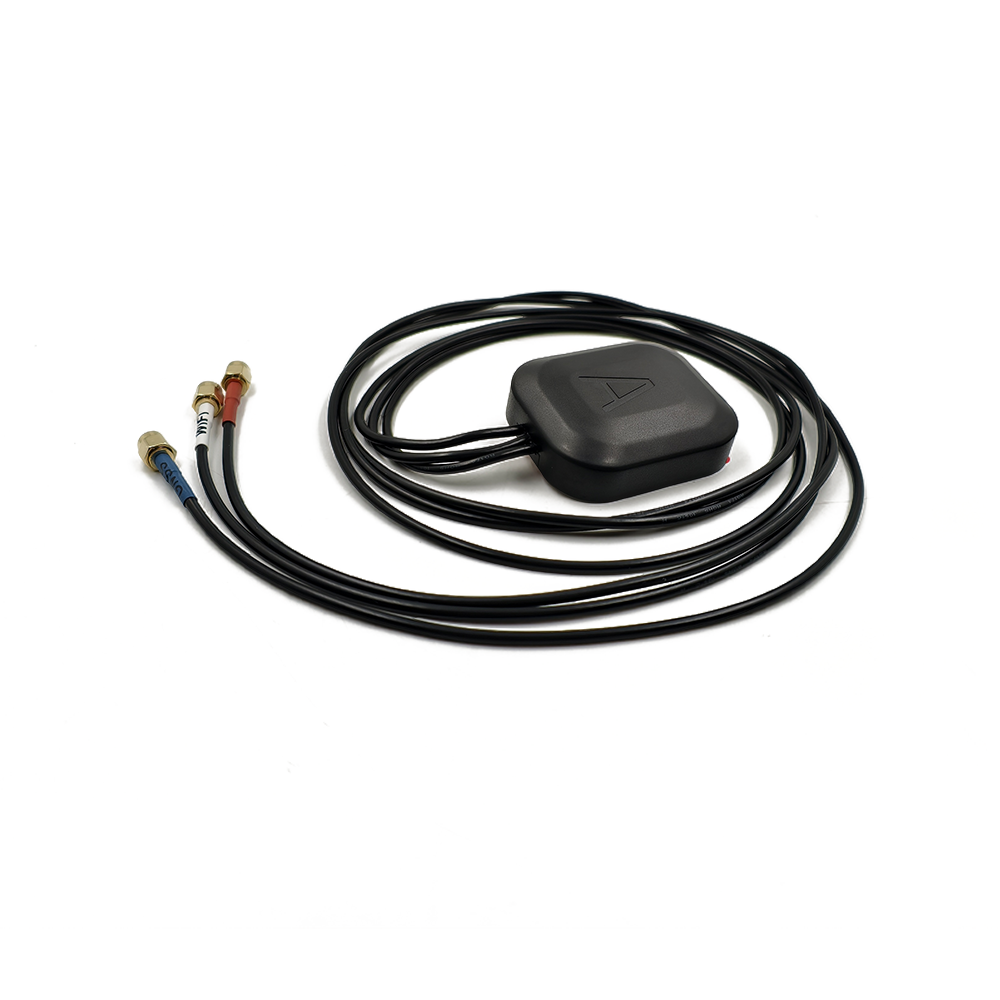The Low-Noise Multi-Band RTK Ceramic Antenna’s unique combination of precision, miniaturization, and environmental stability has made it a critical component in a wide range of industries, from agriculture to autonomous systems. As technology advances, new applications are emerging, and future trends—such as integration with AI, support for next-generation GNSS, and enhanced energy efficiency—are poised to expand its capabilities further. Below is an overview of the antenna’s current key applications and upcoming trends.
5.1 Current Key Applications
5.1.1 Precision Agriculture
Precision agriculture is one of the fastest-growing markets for Low-Noise Multi-Band RTK Ceramic Antennas, as farmers increasingly adopt high-precision technologies to optimize crop yields and reduce resource waste. These antennas are integrated into a variety of agricultural equipment, including autonomous tractors, precision sprayers, and planting machines, enabling centimeter-level navigation and operation.
For example, autonomous tractors equipped with the antenna can follow pre-programmed paths with accuracy within 2–3 centimeters, ensuring that they do not overlap or miss rows during plowing or seeding. This eliminates “skips” (unplanted areas) and “doubles” (over-planted areas), reducing seed waste by up to 15% and increasing crop uniformity. Precision sprayers use the antenna’s positioning data to apply fertilizers or pesticides only to areas that need them—based on soil moisture sensors or crop health data—cutting chemical use by 20–30% and reducing environmental impact.
The antenna’s environmental resilience is also critical in agriculture: its IP67/IP68 rating protects it from dust, mud, and rain, and its thermal stability ensures performance in extreme temperatures (from freezing winters in the U.S. Midwest to hot summers in Brazil). In field tests, agricultural equipment with these antennas has maintained RTK fix rates of over 90% even in dusty harvest seasons or after heavy rain, ensuring uninterrupted operation during critical farming periods.
5.1.2 Professional Surveying and Mapping
Professional surveying and mapping rely on the antenna’s centimeter-level precision to create accurate, detailed maps and measurements for construction, land development, and infrastructure projects. Surveyors use portable GNSS receivers equipped with the antenna to collect data points with accuracy within 1–2 centimeters, eliminating the need for traditional surveying tools like theodolites (which are slower and require line-of-sight).
In large-scale projects—such as highway construction or city planning—the antenna’s multi-band capability ensures accuracy even in challenging terrain. For example, when surveying a mountainous area with limited satellite visibility, the antenna’s ability to receive signals from multiple GNSS constellations (GPS, GLONASS, Galileo, BeiDou) increases the number of available satellites, maintaining RTK fix rates and reducing measurement errors. In urban mapping, the low-noise design minimizes interference from 5G towers and power lines, ensuring that data points collected in city centers are as accurate as those collected in open areas.
The antenna’s miniaturization is also a benefit for surveyors: portable GNSS receivers with ceramic antennas weigh just 500–800 grams, compared to 1.5–2 kg for receivers with metal antennas. This lightweight design reduces surveyor fatigue during long days in the field, improving productivity and reducing the risk of errors from tired operators.
5.1.3 Autonomous Drones and Unmanned Aerial Vehicles (UAVs)
Autonomous drones—used for aerial photography, infrastructure inspection, and delivery—depend on the Low-Noise Multi-Band RTK Ceramic Antenna for precise navigation and positioning. The antenna’s small size and low weight are critical for drones, as even small increases in weight or size can reduce flight time, maneuverability, and payload capacity. A typical ceramic RTK antenna for drones weighs just 5–10 grams, compared to 20–30 grams for a metal antenna, allowing drones to carry larger cameras, sensors, or delivery packages while maintaining flight times of 20–30 minutes.
In infrastructure inspection—such as checking power lines, wind turbines, or bridge structures—drones equipped with the antenna can hover in place with centimeter-level accuracy, enabling high-resolution cameras or LiDAR sensors to capture detailed images of defects (e.g., cracks in concrete, corrosion on metal). For example, when inspecting a wind turbine blade, the drone can maintain a distance of 1–2 meters from the blade while moving along its length, ensuring that every section is captured without colliding with the blade. The antenna’s low-noise design is critical here: it minimizes interference from the drone’s motors or nearby power lines, ensuring that the RTK system remains stable even in electromagnetically noisy environments.
Delivery drones also benefit from the antenna’s precision. In urban delivery scenarios, drones need to land on small platforms (e.g., rooftop delivery pads or backyard patios) with accuracy within 5–10 centimeters to avoid damaging the package or surrounding property. The multi-band capability of the antenna ensures that even in dense urban areas—where satellite signals may be blocked by buildings—the drone can maintain an RTK fix by switching between GNSS constellations, reducing the risk of landing errors.
5.1.4 Autonomous Vehicles and Robotics
Autonomous vehicles (AVs)—including self-driving cars, trucks, and industrial robots—rely on the Low-Noise Multi-Band RTK Ceramic Antenna to complement other navigation systems (e.g., LiDAR, cameras) and achieve the high-precision positioning required for safe operation. While LiDAR and cameras provide short-range environmental awareness, RTK antennas deliver long-range, absolute positioning data, ensuring that the vehicle knows its exact location relative to the world.
In self-driving trucks used for long-haul transportation, the antenna’s centimeter-level accuracy enables precise lane-keeping on highways. For example, the truck can maintain a position within 3–5 centimeters of the lane center, reducing the risk of collisions with other vehicles. The multi-band capability ensures that even in remote areas with limited satellite visibility (e.g., rural highways), the truck maintains an RTK fix by using signals from multiple GNSS constellations. The low-noise design is also critical for AVs operating in urban areas, where EMI from traffic lights, 5G towers, and other vehicles can disrupt GNSS signals—the antenna’s LNA and filters preserve SNR, ensuring that the RTK system remains reliable.
Industrial robots—used in manufacturing, warehousing, and logistics—also leverage the antenna’s precision. In a warehouse, autonomous mobile robots (AMRs) equipped with the antenna can navigate narrow aisles with accuracy within 2–3 centimeters, enabling them to pick up and drop off packages at exact locations. The antenna’s miniaturization allows it to be embedded into the robot’s body without adding bulk, and its environmental stability ensures performance in harsh industrial environments (e.g., cold storage warehouses with temperatures as low as -20°C or manufacturing facilities with dust and vibration).
5.2 Future Trends
5.2.1 Integration with Artificial Intelligence (AI) and Machine Learning (ML)
The integration of AI and ML into Low-Noise Multi-Band RTK Ceramic Antennas is poised to revolutionize their performance, enabling them to adapt to changing environments and optimize signal reception in real time. AI/ML algorithms can analyze historical and real-time data—including signal strength, SNR, interference patterns, and environmental conditions—to make intelligent decisions about antenna operation.
One key application of AI is adaptive interference mitigation. Traditional filtering circuits are designed to reject known interference sources (e.g., 5G signals), but they struggle with unknown or dynamic interference (e.g., a sudden burst of radar signals from a nearby military base). AI algorithms can learn to recognize new interference patterns by analyzing signal data, and then adjust the antenna’s filtering parameters or LNA gain to suppress the interference. For example, if the algorithm detects a spike in interference at 1580 MHz (near the GPS L1 band), it can temporarily increase the attenuation of the BPF at that frequency, preserving the GPS L1 signal while blocking the interference.
ML algorithms can also optimize the antenna’s multi-band reception. By analyzing which GNSS bands and constellations provide the most reliable signals in different environments (e.g., GPS L5 and Galileo E5 in urban areas, GLONASS G1 and BeiDou B1 in rural areas), the algorithm can prioritize signals from those bands, improving RTK fix rates and accuracy. In field tests, AI-optimized antennas have shown a 10–15% improvement in RTK fix rates in urban canyons compared to non-AI antennas.
Another promising application is predictive maintenance. ML algorithms can monitor the antenna’s performance metrics (e.g., noise figure, gain, phase center variation) over time and identify early signs of degradation (e.g., a gradual increase in noise figure due to LNA wear). The algorithm can then alert the user to perform maintenance before the antenna fails, reducing downtime and maintenance costs. For example, in a fleet of agricultural drones, the algorithm can predict when an antenna’s LNA will need replacement and schedule maintenance during off-peak farming periods.
5.2.2 Support for Next-Generation GNSS Constellations and Signals
As global GNSS constellations continue to expand and upgrade, future Low-Noise Multi-Band RTK Ceramic Antennas will need to support new bands and signals to maintain their competitive edge. The U.S. GPS is adding the L7 band (1278.75 MHz) for improved precision and anti-jamming capabilities; the European Galileo is expanding its E6 band (1278.75 MHz) for high-integrity applications like aviation; and China’s BeiDou is introducing the B3I band (1268.52 MHz) for global navigation. To support these new bands, antenna designers are developing innovative ceramic patch designs that can resonate at multiple frequencies without increasing size.
One such design is the “fractal patch antenna,” which uses self-similar geometric patterns (e.g., Sierpiński triangles) to create multiple resonant frequencies in a compact space. Fractal patch antennas can cover 6–7 GNSS bands (including new bands like L7 and E6) in the same size as a traditional 4–5 band ceramic antenna, making them ideal for compact devices like drones and portable receivers. Additionally, advances in ceramic material science—such as the development of composite ceramics with tunable dielectric constants—are enabling designers to optimize the antenna’s resonance for specific new bands. For example, a composite ceramic with a dielectric constant of 12 can be used to tune the patch for the GPS L7 band, while maintaining compatibility with existing bands.
Future antennas will also need to support new GNSS signal modulation schemes, such as the Galileo E6’s BOC (Binary Offset Carrier) modulation, which provides higher positioning accuracy but requires more sensitive electronics. To address this, manufacturers are developing LNAs with noise figures below 1.0 dB and wider bandwidths, enabling them to capture weak, complex signals like E6. They are also integrating advanced digital signal processors (DSPs) into the antenna module to decode these new modulation schemes, reducing the load on the RTK receiver and improving overall system performance.
5.2.3 Enhanced Energy Efficiency for Battery-Powered Devices
As the use of battery-powered devices (e.g., drones, portable receivers, wearables) continues to grow, energy efficiency is becoming a critical priority for Low-Noise Multi-Band RTK Ceramic Antennas. Current antennas consume 5–10 mA of power (primarily from the LNA), which can drain a drone’s battery quickly—especially for devices with small batteries (e.g., consumer drones with 2000 mAh batteries). Future antennas will focus on reducing power consumption without sacrificing performance.
One approach to improving energy efficiency is the development of “adaptive power management” systems. These systems adjust the LNA’s gain and power supply based on the strength of the incoming GNSS signals. When signals are strong (e.g., in open areas), the system reduces the LNA’s gain and power consumption (to 2–3 mA), since the signals do not need as much amplification. When signals are weak (e.g., in urban canyons), the system increases the gain and power (to 8–10 mA) to preserve SNR. In tests, adaptive power management has reduced antenna power consumption by 30–40% on average, extending the battery life of drones by 10–15 minutes.
Another innovation is the use of low-power semiconductor technologies for the LNA and filtering circuits. Manufacturers are transitioning from GaAs LNAs (which consume 5–7 mA) to CMOS (Complementary Metal-Oxide-Semiconductor) LNAs, which consume just 2–3 mA while maintaining a noise figure of 1.2–1.5 dB. CMOS technology is also enabling the integration of multiple components (e.g., LNA, BPF, DSP) into a single chip, reducing power consumption by eliminating the need for separate power supplies for each component. Additionally, advances in energy-harvesting technology—such as the integration of small solar cells or vibration harvesters into the antenna enclosure—are enabling self-powered antennas that can recharge the device’s battery, further extending runtime. For example, a drone-mounted antenna with a small solar cell can generate 2–3 mA of power during daylight hours, offsetting the antenna’s power consumption and increasing flight time by 5–10 minutes.
Conclusion
The Low-Noise Multi-Band RTK Ceramic Antenna has emerged as a cornerstone technology in the field of high-precision positioning, combining the unique advantages of ceramic materials, multi-band GNSS reception, and low-noise electronics to deliver consistent centimeter-level accuracy in even the most challenging environments. Throughout this analysis, we have explored how its design—from the high-dielectric-constant ceramic patch to the ultra-low-noise LNA—enables it to address the critical needs of industries ranging from precision agriculture to autonomous vehicles, while also identifying the challenges it faces, such as high manufacturing costs and vulnerability to severe multipath.
The antenna’s key strengths—unmatched precision, miniaturization, and environmental stability—have transformed the way industries operate. In precision agriculture, it has enabled farmers to optimize resource use and boost crop yields; in surveying, it has streamlined data collection and reduced project timelines; in drones and autonomous vehicles, it has ensured safe, reliable navigation. These applications are just the beginning: as technology advances, the antenna’s role will expand into new areas, such as wearable devices for outdoor recreation and high-integrity systems for aviation.
Looking to the future, the antenna’s evolution will be driven by three key trends: integration with AI/ML for adaptive performance, support for next-generation GNSS constellations and signals, and enhanced energy efficiency for battery-powered devices. AI/ML will enable the antenna to adapt to dynamic interference and optimize signal reception in real time, while advances in ceramic materials and electronics will ensure compatibility with new GNSS bands like GPS L7 and Galileo E6. Energy-efficient designs will extend the battery life of portable devices, making the antenna more accessible for consumer and industrial applications alike.
While challenges remain—such as reducing manufacturing costs and mitigating severe multipath—these are not insurmountable. Advances in manufacturing automation (e.g., robotic screen printing for ceramic patches) will lower production costs, and the integration of adaptive beamforming (enabled by AI) will improve multipath rejection. As these technologies mature, the Low-Noise Multi-Band RTK Ceramic Antenna will become more affordable and versatile, opening up new opportunities for high-precision positioning in a wide range of industries.
In conclusion, the Low-Noise Multi-Band RTK Ceramic Antenna is more than just a component—it is a catalyst for innovation in high-precision positioning. Its unique combination of performance, size, and reliability has already made it indispensable for mission-critical applications, and its future evolution will continue to push the boundaries of what is possible in navigation and positioning. As GNSS technology advances and the demand for precision grows, this antenna will remain at the forefront, enabling a world where accurate, real-time positioning is accessible to everyone, everywhere.




































































 Language
Language
 En
En Cn
Cn Korean
Korean

 Home >
Home > 








 18665803017 (Macro)
18665803017 (Macro)













